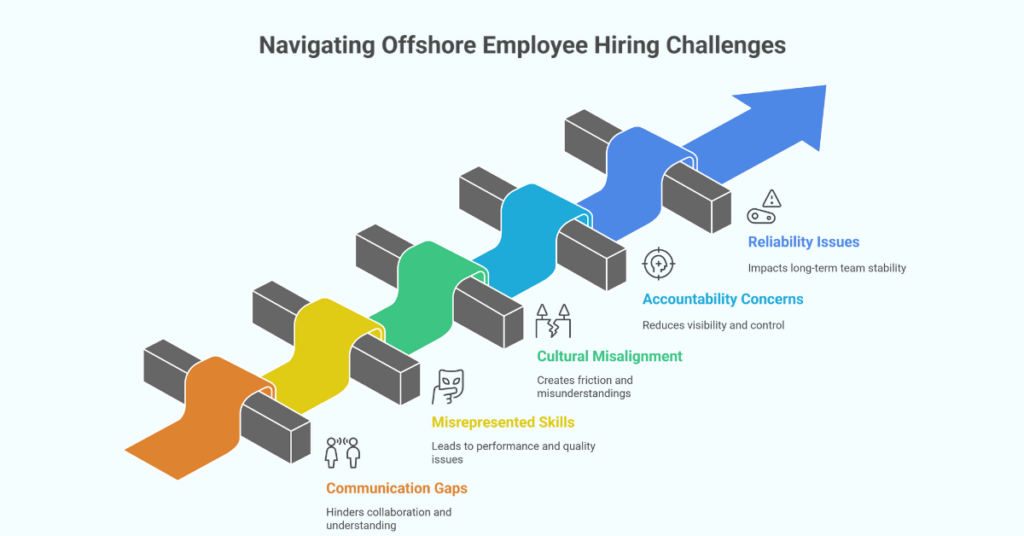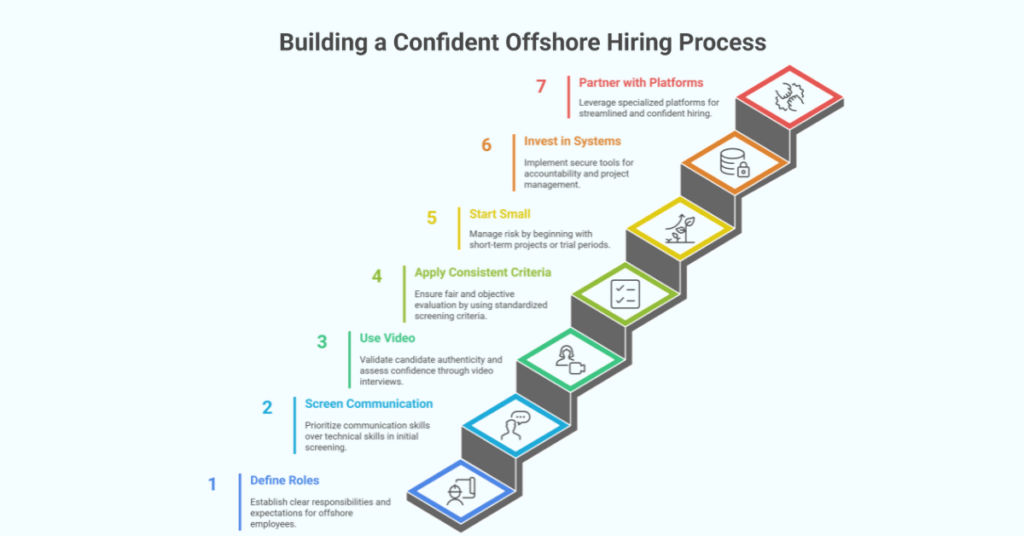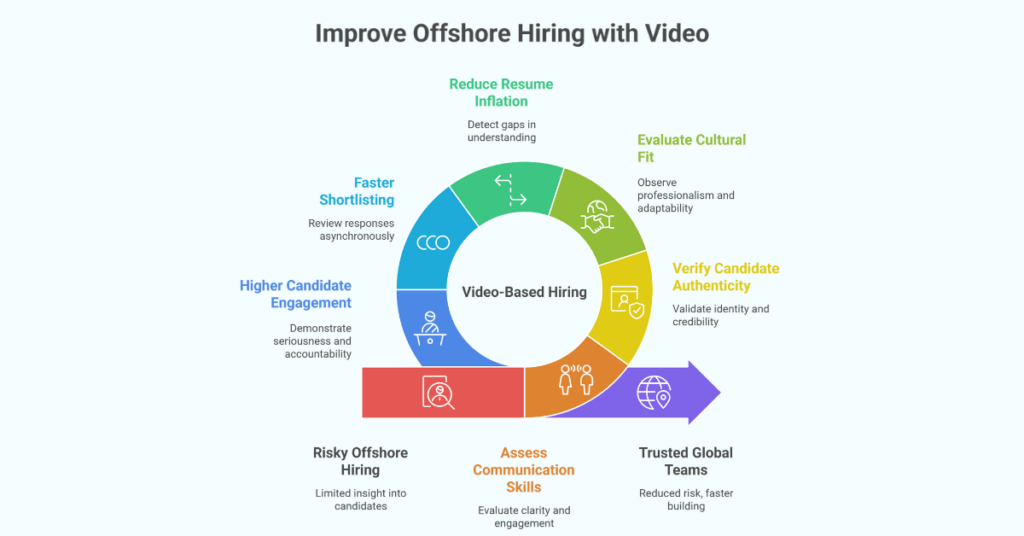The shift to remote work has revolutionized recruitment, allowing businesses to tap into a global talent pool. However, without an efficient strategy, remote hiring can become complex and time-consuming. To stay competitive and attract top candidates, companies need to adopt best practices for remote recruitment. From leveraging technology to optimizing communication, a streamlined virtual recruitment process ensures efficiency, reduces costs, and enhances hiring outcomes. Employers can connect with skilled professionals worldwide, overcome geographic limitations, and find the perfect match for their teams. At the same time, job seekers benefit from increased opportunities and visibility. Remote Recruit provides businesses with advanced tools, such as AI-driven candidate matching, video resumes, and integrated communication, to simplify and improve remote hiring. This article outlines 10 essential best practices to help organizations optimize their remote recruitment process, attract the best global talent, and build high-performing teams efficiently.
Best Practices for Remote Recruitment: Hire Top Global Talent Efficiently
1. Define Clear Job Roles and Expectations
A well-defined job description is the foundation of effective remote recruitment and ensures that employers attract the right candidates.
- Detail Job Responsibilities
Clearly outline the key responsibilities and deliverables for the position. Candidates need to know what is expected of them to evaluate whether they are the right fit for the role. - Specify Required Skills
Include technical skills, soft skills, and experience necessary for success. This helps candidates self-screen before applying, saving time for both parties. - Highlight Remote Work Requirements
Mention tools, time zone expectations, or connectivity needs to set accurate expectations for remote work. Transparency leads to more qualified applicants.
2. Use Video Resumes and Pre-Screening Tools
Video resumes are a powerful way to evaluate candidates’ skills and personalities before conducting interviews.
- Assess Communication Skills
Video resumes allow candidates to showcase their ability to articulate thoughts clearly. Employers gain deeper insights into their communication style and enthusiasm. - Save Time in Screening
Pre-screening with video resumes helps recruiters quickly identify the most qualified candidates without scheduling unnecessary calls or meetings. - Evaluate Soft Skills Early
Soft skills like problem-solving, confidence, and adaptability are better observed in video resumes, ensuring that shortlisted candidates match cultural and role expectations.
3. Leverage AI-Driven Candidate Matching
AI-powered tools streamline the recruitment process by matching employers with candidates who best fit the job requirements.
- Improve Accuracy
AI algorithms analyze job descriptions and candidate profiles to deliver precise matches, eliminating guesswork. Employers can focus on top-tier candidates quickly. - Save Time and Resources
Automated matching reduces the time spent on manually reviewing resumes, ensuring faster decision-making and optimized recruitment workflows. - Enhance Candidate Quality
The accuracy of AI matching ensures that employers connect with candidates who meet both technical and cultural needs, improving hiring outcomes.
4. Streamline Communication and Scheduling
Effective communication is critical for remote recruitment, and streamlining it makes the process seamless.
- Integrated Communication Tools
Use platforms like Remote Recruit that provide messaging, video conferencing, and email integration to simplify interactions with candidates. - Simplify Scheduling
Coordinate interviews effortlessly across time zones with automated scheduling tools. This reduces delays and ensures a smooth hiring process. - Maintain Clear Updates
Keep candidates informed about each stage of the recruitment process. Transparency enhances the candidate experience and company reputation.
5. Optimize the Virtual Interview Process
Virtual interviews are the cornerstone of remote recruitment and need to be handled efficiently to make hiring decisions faster.
- Prepare Structured Interviews
Create a list of relevant questions that assess both technical skills and cultural fit. This ensures fairness and consistency across all interviews. - Use Video Tools Effectively
Platforms like Remote Recruit offer built-in video tools, enabling smooth and professional virtual interviews. Test tools beforehand to avoid disruptions. - Observe Candidate Adaptability
Virtual interviews provide a chance to observe how candidates adapt to remote technologies, showcasing their readiness for remote work environments.
6. Conduct Skills Assessments
Skills assessments allow employers to validate a candidate’s abilities before extending an offer.
- Pre-Hiring Evaluations
Use online tools to test specific technical skills required for the role. This ensures candidates can deliver on their qualifications. - Scenario-Based Tests
Provide real-world problems or case studies to gauge problem-solving and critical thinking abilities relevant to the job. - Evaluate Remote Work Readiness
Assess time management and productivity skills to ensure candidates are prepared for the autonomy required in remote roles.
7. Prioritize Employer Branding
Strong employer branding attracts top candidates and sets your organization apart in a competitive global hiring landscape.
- Showcase Your Company Culture
Highlight your values, work culture, and mission in job descriptions and during interviews. A positive company image attracts motivated candidates who align with your vision. - Share Employee Success Stories
Feature testimonials, case studies, or stories from existing remote employees to showcase the benefits of working with your company. This adds credibility and builds trust with potential hires. - Highlight Growth Opportunities
Top candidates look for professional development. Clearly communicate opportunities for growth, upskilling, and mentorship within your company. - Leverage Social Media Presence
Promote job openings and employer branding on platforms like LinkedIn, Instagram, and Twitter. This improves visibility and encourages top candidates to apply.
8. Implement Structured Onboarding for Remote Employees
A structured onboarding program ensures that new remote employees adapt quickly and remain productive from the start.
- Provide Onboarding Resources
Offer templates, guides, and virtual training sessions to help new hires understand their roles and responsibilities. Tools like Remote Recruit simplify onboarding with ready-to-use materials. - Schedule Virtual Welcome Meetings
Introduce new employees to their teams and company leadership through virtual meetings. This builds a sense of belonging and familiarity. - Assign Onboarding Mentors
Pair new hires with mentors or team leads to help them navigate the company processes and clarify questions during their first few weeks. - Set Clear Goals and Expectations
Provide a roadmap for success with clear milestones and key performance indicators. This helps employees stay focused and productive.
9. Use Data and Analytics to Refine the Recruitment Process
Tracking and analyzing recruitment metrics helps improve your hiring efficiency and identify areas for optimization.
- Measure Key Metrics
Monitor important data points such as time-to-hire, candidate quality, and cost-per-hire to evaluate your recruitment performance. - Analyze Candidate Sources
Identify which platforms, job boards, or hiring methods deliver the best candidates. Use this data to allocate resources more effectively. - Gather Candidate Feedback
Ask candidates about their experience during the hiring process. Use this feedback to refine and enhance your recruitment strategy. - Optimize Job Listings
Use analytics to determine the effectiveness of job postings. Make improvements to job descriptions and keywords to attract better candidates.
10. Foster a Positive Candidate Experience
Providing an exceptional candidate experience increases your chances of securing top talent and improving your company’s reputation.
- Communicate Proactively
Keep candidates updated at every stage of the hiring process. Automated tools can ensure timely responses and maintain transparency. - Personalize Interactions
Tailor communications to make candidates feel valued. Address them by name, acknowledge their skills, and provide specific feedback when possible. - Simplify the Application Process
Avoid lengthy or overly complicated application procedures. Platforms like Remote Recruit make it easier for candidates to apply and submit video resumes. - Follow Up Post-Recruitment
Even if a candidate is not hired, send follow-up messages to thank them for their time and encourage them to apply for future opportunities.
Solutions Provided by Remote Recruit
Remote Recruit provides businesses with a comprehensive platform to optimize their remote recruitment process. Employers can post detailed job descriptions, use AI-driven matching to connect with top candidates, and request video resumes to evaluate communication and presentation skills early in the process. The platform’s advanced search filters, pre-screening tools, and built-in communication features streamline the recruitment journey, saving businesses time and resources. Employers can also leverage virtual interview tools and onboarding resources to ensure smooth hiring and integration of remote employees. For job seekers, Remote Recruit offers personalized profiles, video resume creation, and access to global opportunities. By providing tools for both employers and candidates, Remote Recruit simplifies remote recruitment, connects businesses with high-quality talent, and ensures a seamless hiring experience.
Conclusion
The remote recruitment process can be complex, but by adopting best practices and leveraging the right tools, businesses can simplify hiring and access the best global talent. From defining clear job expectations and utilizing video resumes to implementing AI-driven matching and skills assessments, these strategies ensure efficiency and success. Platforms like Remote Recruit provide a one-stop solution for employers to optimize every stage of remote recruitment, from job posting to onboarding. Job seekers also benefit from tools that enhance their visibility and connect them with international opportunities. By streamlining hiring workflows and reducing administrative burdens, Remote Recruit empowers businesses to build highly skilled, diverse, and productive remote teams. As remote work continues to shape the future of employment, implementing these best practices will enable businesses to stay competitive and thrive in a globalized workforce.




